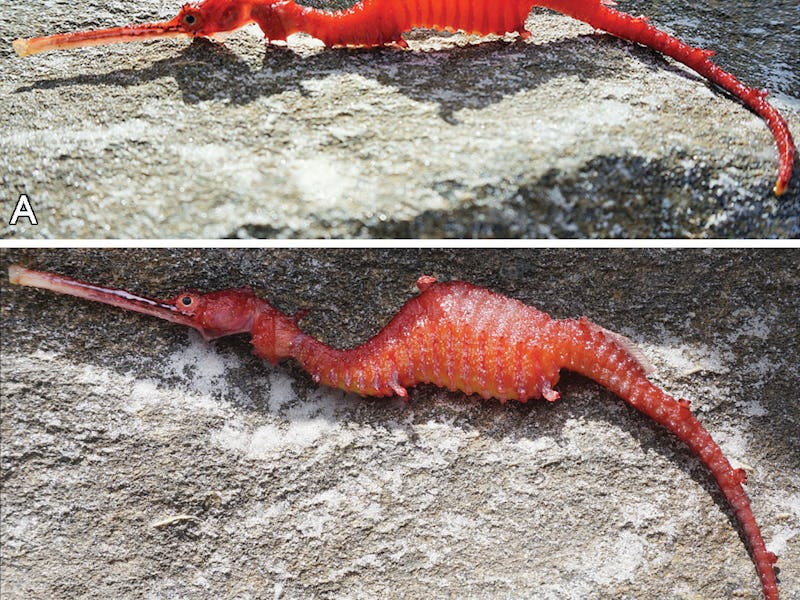Scientists Recorded the First Video of a Live Ruby Seadragon
And it looks like a beautiful trash alien.

When it’s out of the water, the ruby seadragon (Phyllopteryx dewysea) looks like the Pokémon Seadra if someone turned it into jerky. But when it’s in its natural habitat, swimming around in sponge gardens off the coast of Australia, this small marine vertebrate flutters and drifts like a majestic piece of trash. Until recently, this rare sight was reserved for the sea sponges alone. But on January 13, the world got a glimpse of the ruby seadragon in its natural habitat, thanks to marine biologists Greg W. Rouse and Josefin Stiller of Scripps Oceanographic Institute at the University of California, San Diego and Nerida G. Wilson of the Western Australian Museum.
The other two species of seadragon, the common seadragon (Phyllopteryx taeniolatus) and the leafy seadragon (Phycodurus eques), have been well-documented by scientists. It wasn’t until 2015 that Stiller, Wilson, and Rouse described the ruby seadragon in scientific literature. But they only had museum specimens to work with. Their new study published Friday in the academic journal Marine Biodiversity Records documents their successful search for the elusive sea creature around the Recherche Archipelago in western Australia.
In addition to describing what they saw, the scientists were kind enough to capture the big moment on video for the world to see.
As you can see from the video, the ruby seadragon easily blends into its surroundings. In this seafloor sponge garden, the animal’s camouflage technique is to simply look like a stray piece of vegetation. If it wants to anchor itself, though, the ruby seadragon can use its prehensile tail, a feature that scientists were unable to discern from the dried up museum specimen.
In the paper, the scientists say that it’s possible this species had never been seen in the wild because it lives deeper than most recreational SCUBA divers typically venture. In fact, they shot this video with a remotely operated vehicle over 50 meters below the ocean’s surface. Who knows what other bizarre creatures we’ll discover as more and more sophisticated underwater robots become available.